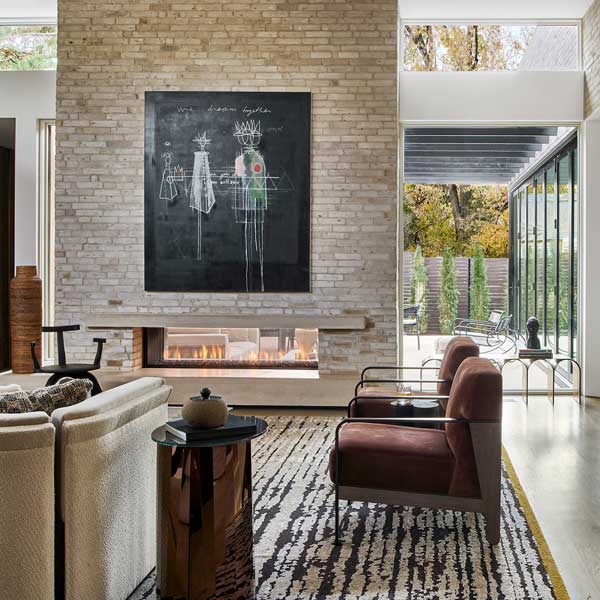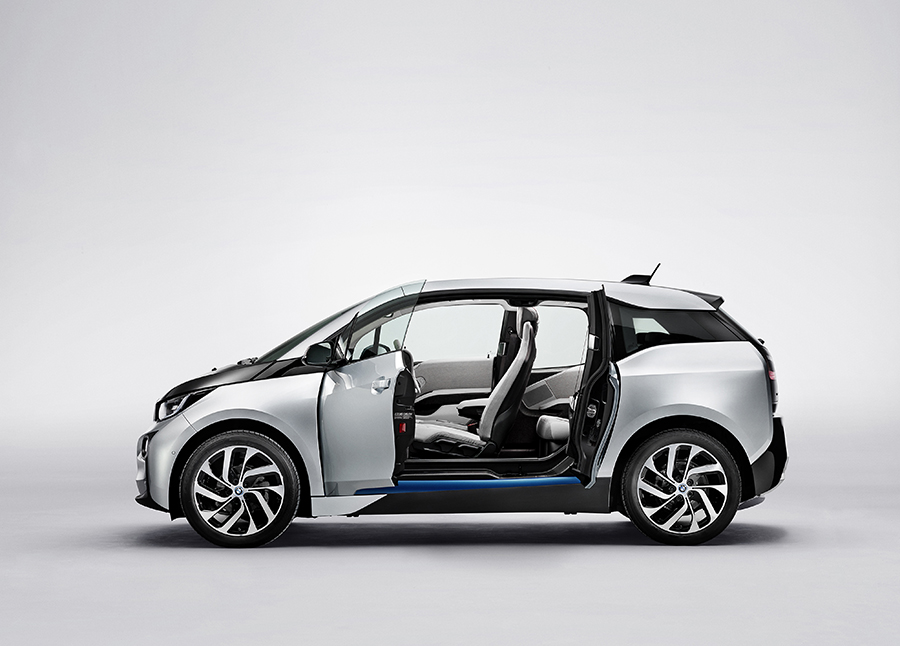 Have you heard we’re giving one lucky winner a BMW i3 for a whole week as part of our Wheels for a Week campaign? The i3 is BMW’s first all-electric vehicle, and its eco-friendly features can be found inside the car, as well. To learn more, we caught up with Lead BMW Genius Matthew Rebeck, who shares with us here five facts about the i3 interior design.
Have you heard we’re giving one lucky winner a BMW i3 for a whole week as part of our Wheels for a Week campaign? The i3 is BMW’s first all-electric vehicle, and its eco-friendly features can be found inside the car, as well. To learn more, we caught up with Lead BMW Genius Matthew Rebeck, who shares with us here five facts about the i3 interior design.
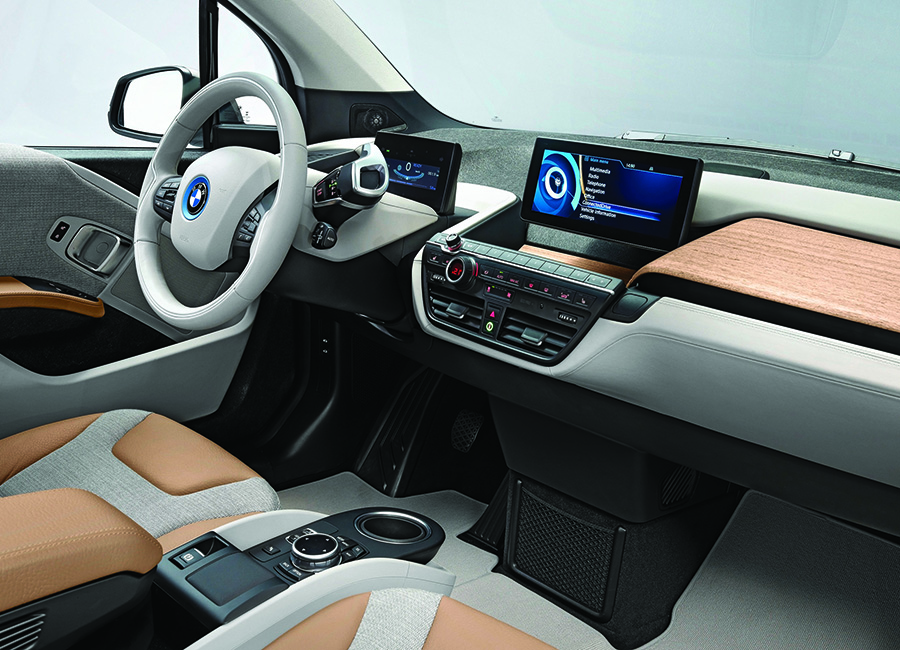 IT’S NATURAL
IT’S NATURAL
For the panels on the upper dashboard and side door panels, Kenaf was used, a fast-growing plant material. The fabric for the seats is comprised of recycled plastic bottles and wool, and the leather was dyed using oil tree leaves. The main part of the dash is made from eucalyptus wood sourced locally in Leipzig, Germany where the car is produced. The most feedback we get from clients is they LOVE the eucalyptus wood.
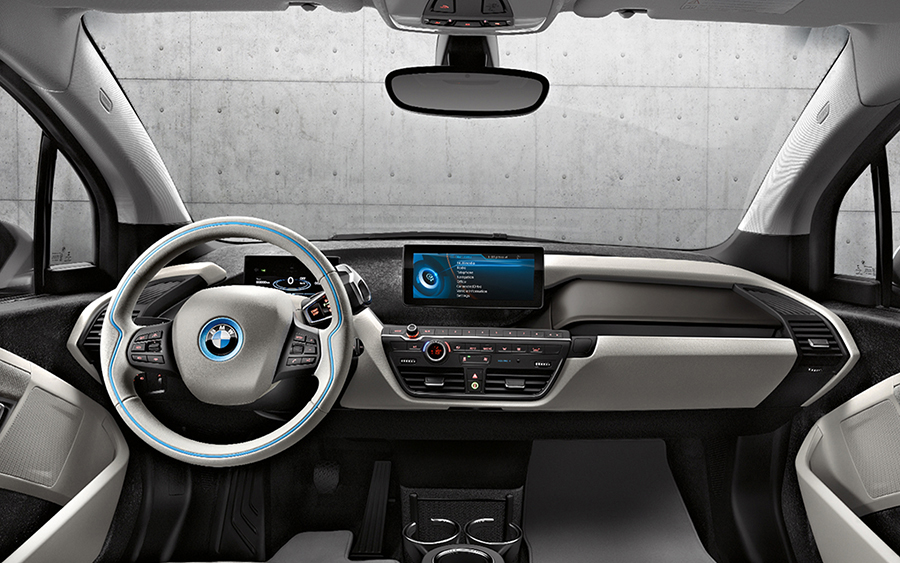 IT’S MODERN
IT’S MODERN
The different color schemes and use of natural-looking materials gives the i3 a very modern vibe, almost like a NYC loft with exposed brick and an open ceiling. The eucalyptus wood is semi-treated, so it has a more natural look. The Kenaf on the door panels and upper dash have a raw appearance to them. BMW could have easily used plastic or vinyl to cover the materials. 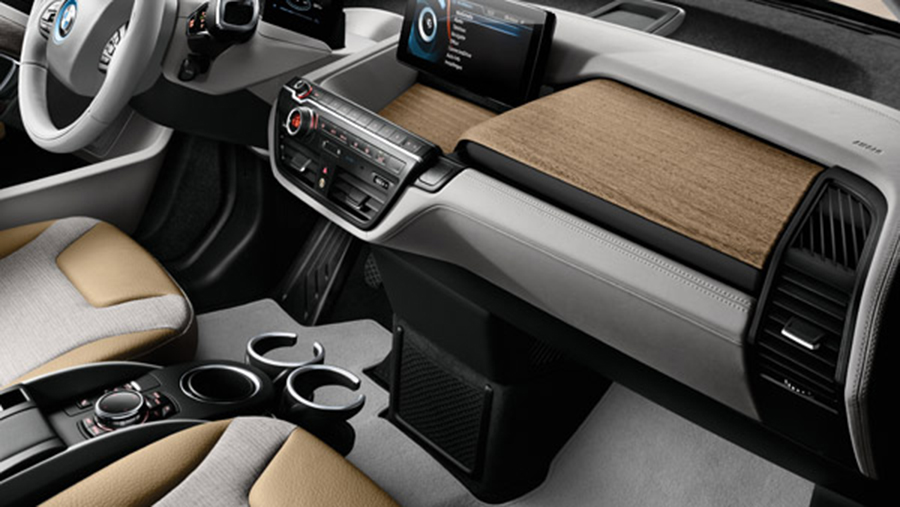 IT’S ECO-FRIENDLY
IT’S ECO-FRIENDLY
Beyond the post-consumer and eco-friendly materials, both i3 production plants use 100% renewable energy as their power sources!
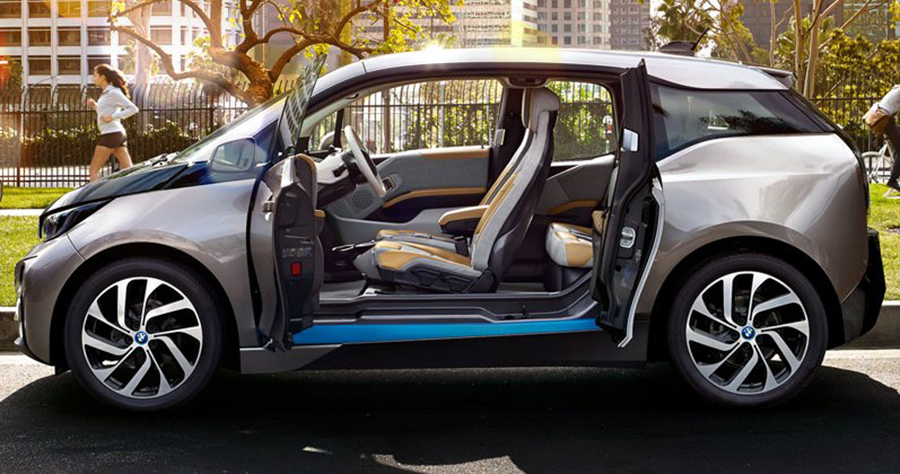 IT’S ROOMY
IT’S ROOMY
The lack of a transmission tunnel running through the middle of the floor board offers more leg room for the front passengers. The i3 has a similar wheelbase as the 2 series but has the interior room of a 3 series. With the strength of the carbon fiber reinforced plastic (CFRP) passenger shell, there is also no need for a B pillar (the pillar between the front and back doors), offering more of an open feel.
 IT’S LIGHT
IT’S LIGHT
Even though the frame is technically not considered to be in the interior, I feel the CFRP passenger shell is one of the most advanced technologies in the car. It not only makes the car super lightweight (2,600 pounds compared to the 2 series at 3,400 pounds), but it also adds more head room. Other cars that use carbon fiber for their frames are also much higher in price point than the i3 (i.e Ferrari, Bugatti).
For more on the interior design, check out this video from its designer, Benoit Jacob.
[youtube height=”HEIGHT” width=”WIDTH”]https://www.youtube.com/watch?v=5eNqmJmzy4E[/youtube]\



